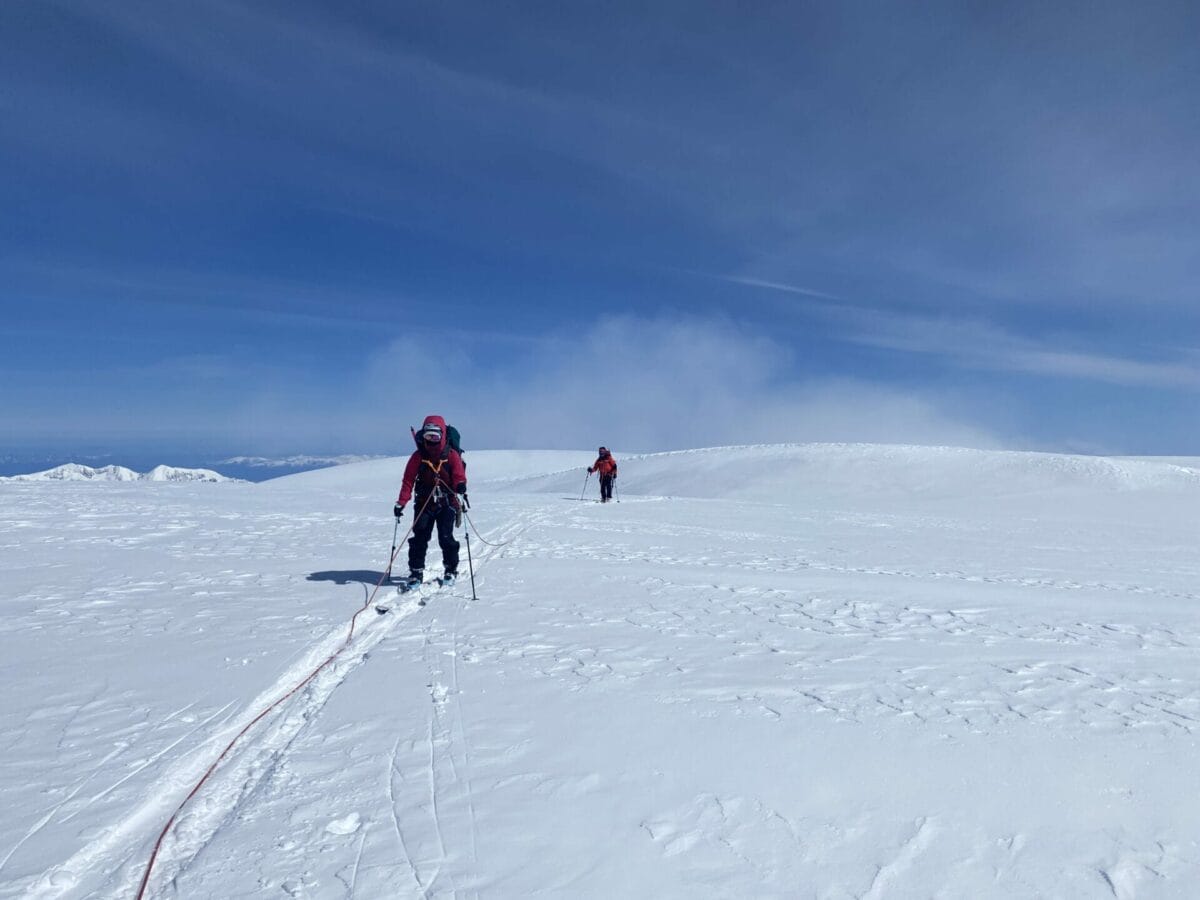
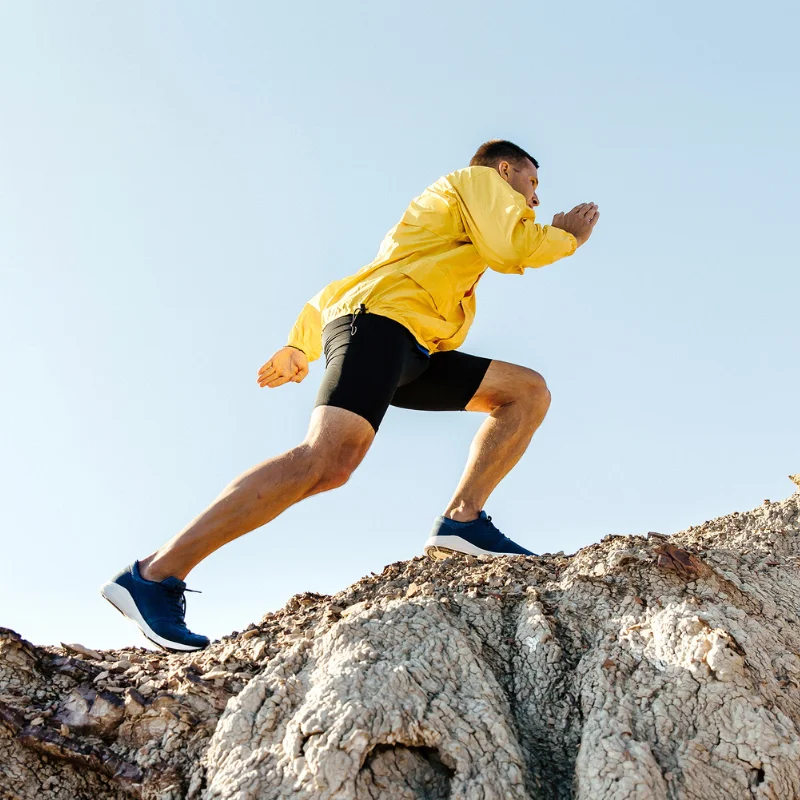
As an active and adventurous trail runner, food is fuel for your body! When you feed your body well, you can run longer and stronger, recover faster, avoid injury, and feel and function your best on and off the trail.
Optimal nutrition is foundational to feeling and performing your best while trail running. However, there’s a lot of conflicting information about how to properly fuel your body during endurance exercise like trail running.
In this article, I’ll cut through the noise and present you with an evidence-based approach to trail running nutrition during training. Read on to learn about the foundations of trail running nutrition to fuel your body optimally before, during, and after your runs!
Please note that I am an affiliate for some of the products I’ve linked to in this post. If you click the link here and make a purchase, I may earn a commission at no extra cost to you.

A solid nutrition foundation is vital for your performance as a trail runner.
In this blog, I will cover how to build a solid nutrition foundation for trail runners training for marathon distances or below. Ultra running (running distances longer than a marathon) is a separate beast; I will cover nutrition for ultra running in a separate, future blog.
Let’s start by discussing the fuel sources your body draws from while trail running. This will set the stage for understanding what to eat before, during, and after trail running.
Please note that this blog covers nutrition for trail running training, NOT racing. Fueling for trail running training and fueling for trail running races are not one and the same. Fueling for training should (for the most part) be based on supporting optimal training adaptations. Race-day fueling should support maximal performance. I will cover race-day nutrition in a separate blog.
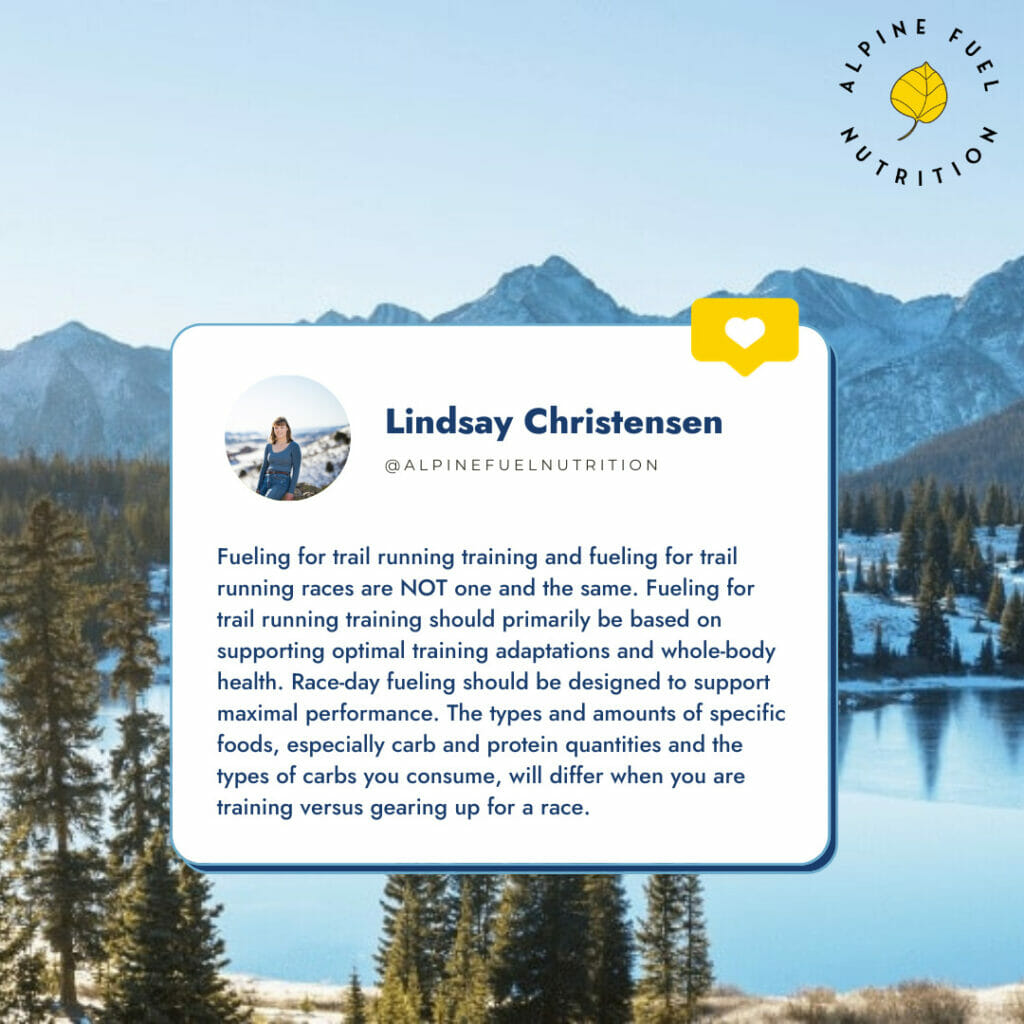
Carbohydrates provide the primary fuel, glucose, that your body needs to make cellular energy (ATP) to perform exercise such as trail running. Carbohydrates can be grouped into three main categories:
Glycogen is predominantly stored in your liver and skeletal muscles, which can be drawn upon to provide energy during exercise. Your body can store a limited amount of carbohydrates for later use in the form of glycogen. Your liver can hold about 100-120 grams of glycogen. Your skeletal muscles can store about 500 grams of glycogen. (Source)
I recommend selecting carbohydrate foods that are relatively low on the glycemic index for the foundation of your carb intake during trail running training. While the glycemic index isn’t a perfect system, it provides a nice heuristic for selecting carbs to include in your diet.
The glycemic index (GI) ranks foods based on their blood glucose response compared with a reference food, typically white bread or pure glucose. The GI is calculated by measuring the glucose response after eating a food that provides 50 grams of carbohydrates. A food with a low GI typically (but not always!) produces a mild, sustained increase in blood glucose, whereas a food with a high GI produces a more significant, transient glucose spike.
Glycemic load (GL) is related to GI but may be an even more effective way of categorizing foods based on their effect on blood glucose levels. The glycemic load considers the total amount of the food being consumed. The GL is calculated by multiplying the GI of a food by the grams of carbohydrates in a serving of the food.
Low-GI and low-GL foods allow you to fuel your body properly with carbohydrates without dramatically spiking your blood sugar or promoting gut microbiome imbalances.
Whole-food carbs with a low glycemic load to prioritize as the foundation of your carb intake during training:
On the other hand, carbohydrates that have a higher GI and GL, such as white rice, bread, tortillas, and pasta, may be appropriate for some trail runners post-training some of the time. Why should these types of carbs constitute a small portion of our diet? Let me explain.
High-GI and high-GL carbs are rapidly digested in the gut, quickly providing glucose to replenish muscle and liver glycogen stores. This effect can be beneficial during exercise when your muscles and brain acutely need glucose.
However, frequently eating high-GI and high-GL carbs during training can promote blood sugar imbalances (which, over time, could lead to metabolic syndrome or type 2 diabetes), chronic inflammation (which can lead to issues such as brain fog and arthritis), and gut issues. Therefore, we don’t want these carbs to comprise the majority of our carb intake. (Source)
What about grains? Contrary to what the USDA has told us, you do not need to include grains in your diet to support optimal health. In fact, grains are much lower in nutrients than meat, poultry, seafood, vegetables, fruits, nuts, and seeds. Grains also contain antinutrients, such as gluten, that can be inflammatory for some people.
I consider grains an optional carbohydrate source for trail runners. If you are a trail runner who struggles with blood sugar imbalances or wants to improve your body composition, consider limiting your intake of grains and focus more on vegetables and fruits as your primary carbohydrates.
If you include grains in your trail running nutrition plan, quinoa, buckwheat, and oats are good options. Some trail runners also do well with rice.
While brown rice has long been promoted as “healthier” than white rice, I actually prefer white rice over brown rice because it is easier for many athletes to digest; brown rice contains antinutrients that can irritate the digestive tract in many people.
The blood sugar impact of brown and white rice is virtually identical (I’ve confirmed this using continuous glucose monitors with many clients!), so whether you eat brown rice or white rice, your glucose response will be about the same.
There is no single answer to this question because your body’s carbohydrate needs depend on many factors, including age, weight, sex, and total activity level. However, many trail runners do well eating somewhere in the range of 120-200 grams of carbohydrates per day.
However, your carbohydrate needs also vary throughout a training cycle if you’re training for trail races. Adjusting your diet (including your carb intake) as you progress through different training cycles throughout the year is called nutrition periodization. This is a big topic that I plan to address in a future blog.
Here are some examples of the carbohydrate content of various carb-containing foods:
Please note that this list simply provides the number of carbs in a serving of each food, not the glycemic index of each food.
You will notice that this recommended carbohydrate intake range is significantly lower than the ranges recommended by many sports nutritionists and articles. That is intentional! My goal is to help trail runners become metabolically efficient during their training, and overeating carbohydrates works against that goal.
The topic of metabolic efficiency (shoutout to dietitian Bob Seebohar for his fantastic work in this area!) deserves an article all its own, so I won’t expand on it further here. However, I do plan to discuss it more in future articles.
In my experience, carb intakes exceeding 200 grams/day begin to provide diminishing returns for many (but not all) athletes.
Fat from your diet and body fat stores serves as an energy source for your body at rest and at lower exercise intensities. The 2 biochemical pathways your body uses to burn fat for energy are “lipolysis” and “beta-oxidation.”
Healthy fats are an essential part of your diet as a trail runner. Healthy fats help regulate inflammation and hormone production and support satiety. Examples of healthy fats include:
Conversely, we want to avoid inflammatory fats, namely industrial seed oils. Industrial seed oils (often referred to as “vegetable oils”) are the oils expressed from oilseeds, including canola (rapeseed), corn, cottonseed, grapeseed, safflower, soybean, and sunflower oils.
Industrial seed oils are recent additions to the human diet (we only began consuming them in significant amounts in the 20th century), and research suggests that consuming these oils drives inflammation and, possibly, chronic diseases like cardiovascular disease. (Source)
Here are two easy ways to avoid avoid industrial seed oils oils:
Overall, healthy fats provide anti-inflammatory benefits in athletes and may support exercise recovery, satiety, healthy hormone production, and brain function. In short, if you are a trail runner, healthy fats should be a central part of your diet.
Proteins are part of every cell and tissue in our bodies, including our muscles. The proteins we eat through food replace broken-down proteins in our bodies and rebuild protein-containing tissues.
Under normal conditions, your body doesn’t use protein for energy. Protein is vital for many things, but energy production isn’t one of them! Instead, our bodies prioritize using carbohydrates and fats for energy production.
Proteins are made up of building blocks called amino acids. There are essential amino acids, which our bodies cannot make from scratch, and non-essential amino acids, which our bodies can synthesize from glucose and other amino acids.
To make matters even more complicated, there are conditionally essential amino acids, meaning their synthesis in our bodies can be limited during specific times, such as during times of high stress or pregnancy. Examples of conditionally essential amino acids include glutamine and glycine, which is part of collagen-containing connective tissues. Athletes may need to consume more conditionally essential amino acids than non-athletes. For example, athletes may need more glutamine to support healthy gut function. (Source)
Your body builds muscle when your net protein balance is positive, meaning muscle protein synthesis exceeds muscle protein breakdown. Therefore, you must include sufficient protein in your diet to maintain a net positive protein balance.
So, how much protein should you be eating in your diet? While there’s yet to be a consensus on how much protein endurance athletes, like trail runners, should eat daily, scientists and nutritionists agree that the recommended dietary intake (RDI) for protein of 0.8 grams/kg body weight/day is too low for active people. Active people have higher protein needs than sedentary people due to increased protein turnover triggered by demanding exercise.
Most researchers and sports nutritionists agree that runners need more protein than the RDA, but how much? While there is still some disagreement among researchers and practitioners about the “right” amount of protein every runner needs, approximately 1.6-1.8 grams of protein/kg body weight/day may be ideal. For example, this means a 140-lb person would need to consume approximately 102-114 grams of protein/day. (Source, Source)
However, research also shows that, in ultra runners, protein intakes up to 2.5 g/kg/day may be warranted during the peak of your training cycle when calorie needs are greater to optimize performance and recovery. In other words, protein needs for runners are individualized and dependent on the runner’s training volume, intensity, and other health needs. (Source)
When you eat protein during the day may be just as important as how much protein you consume. Your protein intake should be evenly distributed throughout the day. For example, if your target protein intake is 120 grams daily, you should eat 30 grams of protein spread across 4 daily meals.
Many trail runners wonder, should I include animal protein in my diet? I know plant-based or “animal protein-light” diets are all the rage. However, based on my experience, these diets are ideal for trail runners.
In my work with hundreds of clients, I have consistently found vegan and vegetarian diets to be associated with nutrient deficiencies, which can lead to many health problems, including impaired athletic performance. Scientific research also indicates that nutrient deficiencies are common in people eating vegan and vegetarian diets. (Source, Source)
Some of the most common nutrient deficiencies I see in vegan and vegetarian diets include iron, calcium, zinc, vitamin B12 deficiencies, omega-3 fatty acid, and protein deficiencies. These nutrient deficiencies occur in people eating vegan and vegetarian diets because animal foods are the best sources (and in the case of some nutrients, such as vitamin B12) the ONLY source of these nutrients.
Deficiencies of these nutrients may lead to difficulty building and maintaining muscle mass, impaired exercise recovery, frequent illness, low bone density, and iron deficiency anemia, which profoundly impairs performance.
While I happily support vegans and vegetarians in my nutrition practice, I am a strong proponent of a balanced omnivorous diet for trail runners for the reasons cited above.
Vegetables (other than winter squash and root veggies) are not a significant source of carbohydrates, protein, or fat. However, they should still be a central part of your diet!
Non-starchy vegetables such as leafy greens, broccoli, and bell peppers provide vitamins, minerals, fiber, and phytonutrients that regulate inflammation and support balanced blood sugar. Healthy inflammation regulation and balanced blood sugar are vital to your performance and longevity as a trail runner.
Try to include at least 3 servings (about 3 cups) of non-starchy veggies daily.
How do you know if your trail running nutrition needs some work? Here are several key signs that you need to improve your nutrition:
How do these symptoms relate to your nutrition? Well, your nutrition profoundly impacts inflammation in your body and the function of every body system (muscles, bone, brain, etc.). When your diet is suboptimal, inflammation tends to increase and nutrient-dependent body systems suffer.
Chronic inflammation renders your body more susceptible to musculoskeletal injuries, including the types of injuries sustained by trail runners. Chronic inflammation is also implicated in issues with mood and fatigue. If you’re regularly eating foods that inflame your body and excluding anti-inflammatory foods, your athletic performance will be impaired. (Source, Source)
In addition, your body requires certain macronutrients (protein, carbs, and fat) and micronutrients (vitamins, minerals, and essential fatty acids) to recover from running. Inadequate nutrition can impair the recovery process and adaptation to exercise. For example, calcium and vitamin D deficiencies increase the risk of stress fractures by compromising bone structure. (Source, Source)
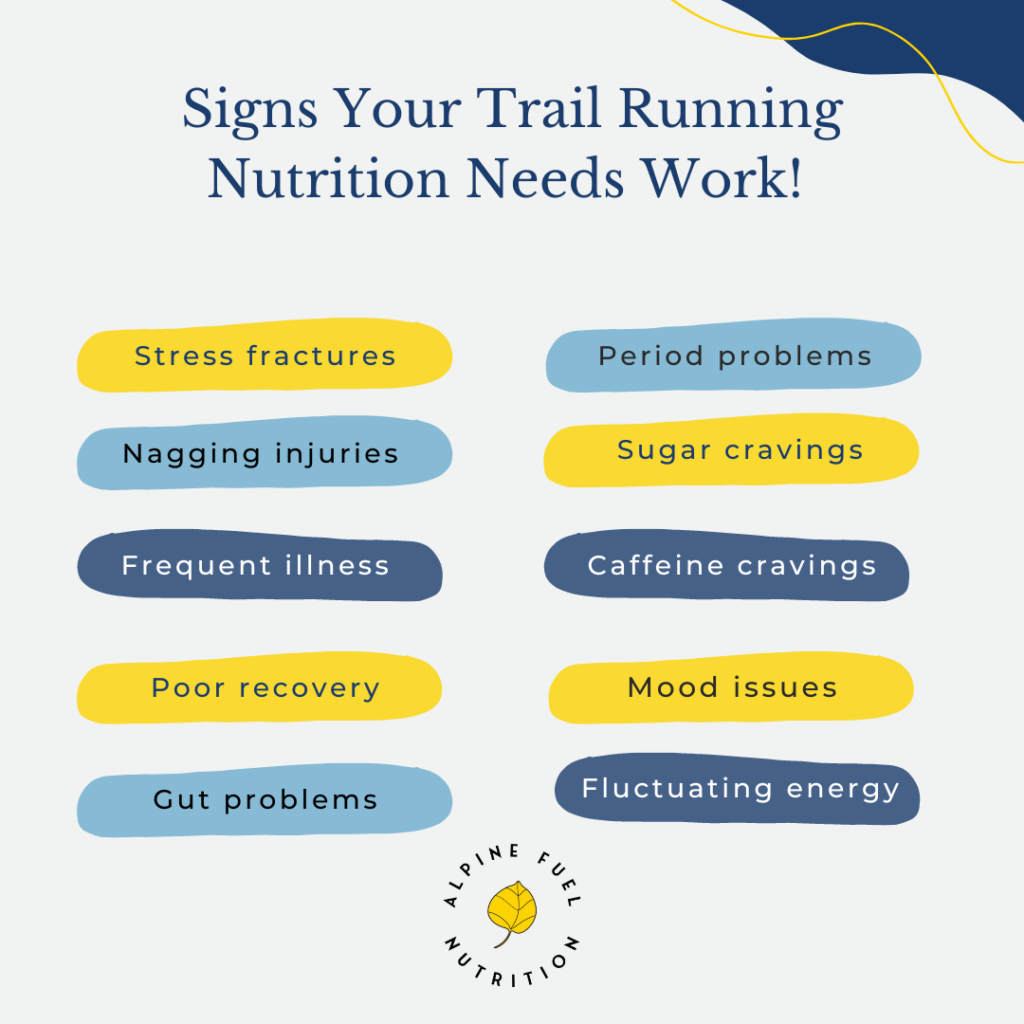
When and what you eat can significantly impact your performance as a trail runner. Let’s discuss what to eat before, during, and after training runs.
First things first: You will notice that my professional perspective on nutrition for trail runners differs in several ways from the mainstream nutrition advice for runners.
For one, I am not a big fan of processed sports nutrition products, such as gels and chews, during training. I prefer to have my runners focus as much as possible on eating whole foods during training and use sports nutrition products, if necessary, during races. Of course, you need to practice your race-day fueling strategy ahead of time, but you don’t need to “practice” every time you run!
Secondly, you’ll notice that I am a passionate proponent of whole foods. Health is the foundation upon which your running performance is constructed, and eating a diet that is primarily whole foods will help you maintain a high level of health.
Before I began working in sports nutrition, I spent five years working with clients with chronic diseases, including type 2 diabetes, cardiovascular disease, arthritis, autoimmune diseases, and gastrointestinal issues. I saw firsthand how impactful a whole-foods diet can be for preventing and managing these conditions.
Athletes are not immune to chronic health challenges, so if your goal is to run long and strong for many years to come, then a diet centered around whole foods will also serve you well!
Finally, please note that my guidelines in this section are just that – guidelines. Your individual nutrition needs during training may vary. If you need help personalizing your trail running nutrition, I’d love to help! You can learn more about my nutrition services here.
Disclaimer: The information provided in this section is NOT intended to be a comprehensive overview of race-day nutrition. Stay tuned for a future blog specifically about race-day nutrition for trail runners!
You have several options for fueling up before a training run. Here’s a rundown of your options:
So, what should you eat during your training runs?
Your body uses a mix of fat and carbohydrates to provide energy during exercise. Generally, our bodies burn largely fat for fuel during aerobic exercise up to approximately 63-65% of VO2 max. However, there is variability here; some athletes can burn a significant amount of fat for fuel at higher intensities.
If your training run lasts 60 minutes or less, you don’t need to eat anything during your run. Your body can rely on stored fat and glycogen to fuel this activity.
However, if your training run will last longer than 60-90 minutes, it is wise to begin replenishing your body with some fuel at the 60-minute mark. While your body can use fat to fuel this longer run, replenishing your glycogen stores by consuming carbohydrates will help you perform your best.
Please note that there may be a time and place for fasted runs for some athletes, namely male athletes. I am not going to go down that rabbit hole in this article, but will address this topic in a future article!
Many sports nutrition resources recommend using gels, chews, and sports drinks to supply calories during exercise. While there’s a time and place for these foods, I recommend refueling your body with whole foods as much as possible during training and reserving sports nutrition products primarily for races.
Here are the three main problems posed by an overreliance on simple sugars from gels, chews, and sugar-laden sports drinks during trail running training:
During our trail runs, we want to fuel our bodies with the right types of carbohydrates to avoid GI distress and keep our blood sugar balanced.
Whole foods produce a more gradual and sustained amount of carbohydrates, as opposed to the rapid spike (and subsequent drop) in blood sugar prompted by ingesting purely processed sugary gels, chews, and sports drinks.
Whole foods are also friendlier to your gut microbiome, which is crucial to your performance as an athlete. Whole foods are also a rich source of vitamins and minerals that your body requires for optimal athletic performance and recovery, such as magnesium, potassium, calcium, and vitamin D. (Source)
When your body runs out of glycogen, you may “bonk” or “hit the wall;” these terms describe the sudden plummet in energy that endurance athletes experience, which is in large part believed to be caused by the sudden unavailability of glucose for powering physical activity.
Protein and fat should be consumed before and after your runs (though you want to eat less protein and fat before your run, as discussed above since these foods slow gastric emptying and can sit heavily in your stomach).
Here are some examples of whole-food carbohydrates you can eat during your training run:
A good rule of thumb for training runs lasting longer than 60-90 minutes is to consume 30-90 grams of carbohydrates per hour. Typically, I recommend starting at the low end of this range; you can experiment with increasing (or decreasing!) your carb intake during your runs from there. However, I recognize that a lot of individual variability affects fueling during runs, so this recommendation is not set in stone!
If you simply can’t tolerate whole foods during a training run, there are many options for gels and other sports nutrition products on the market. It can be difficult to choose! Typically, I prefer “gels” that are a bit closer to being a whole food, such as:
I’ve personally used these brands and found that they sit well with my digestive system and provide a convenient way to refuel during during training runs when I’m going too fast to chew whole foods, like a banana.
There are two fundamental nutrition principles to focus on after a trail run:
You may wonder, “Can I load up on pasta, pastries, or [fill in the blank starchy food] after a training run?” While there is absolutely a time and a place for eating these refined carbohydrates (certainly, you can enjoy a bowl or two of pasta after a hard trail race!), they should ideally not be your go-to carbohydrates after EVERY training run.
Many trail runners go hog-wild and eat just about anything after a long run. I get it; you have just worked hard, are ravenously hungry, and want to reward yourself with something delicious!
While I’m all for food freedom and allowing yourself dietary indulgences, the truth is that the food you eat after a long run significantly impacts your ability to recover from the demands you just placed on your body.
Eating processed foods regularly after long runs may increase inflammation in your body, compromise your gut health, and potentially impair your recovery and long-term health. Allow yourself some indulgences, but try to stick to the post-run nutrition guidelines I’ve provided above the majority of the time.
Trail running takes us through various environmental conditions, including extremes of heat, cold, and high elevation. These extremes impact your nutrition and hydration. As a mountain athlete, altitude is also a factor in your hydration status. Low humidity, hyperventilation (rapid or deep breathing), and increased urination also increase body water loss at altitude. Staying on top of your fluid intake is essential!
Even minimal dehydration, 2% of your body weight, can begin to hinder your athletic performance by reducing your blood volume and the amount of oxygenated blood pumped to working muscles. (Source)
A good rule of thumb is to start by aiming to drink half your body weight in ounces of water throughout the day. On top of that, drink to thirst during runs under an hour. Aim to drink 8-16 ounces of water per hour for runs longer than an hour.
For runs lasting under an hour, plain water will suffice. For runs lasting over an hour, you should replenish your body with water plus electrolytes to replenish electrolytes lost in your sweat. I recommend a low-osmolality hydration mix such as Skratch Labs Hydration Sport Drink Mix.
Determining how much water and electrolytes to drink during a run requires self-experimentation. Your body size, how much you sweat, the composition of your sweat, the intensity of your exercise session, altitude, heat, and humidity all affect your water and electrolyte needs.
Disclaimer: Water and electrolyte losses during exercise can vary widely from one person to the next. The most accurate way to assess your fluid and electrolyte needs is through sweat testing, which can be performed in specific healthcare and laboratory settings.
Now that we’ve covered some nutrition basics, you may wonder, “How much should I eat?” There is no easy answer to this question! Your unique calorie needs as a trail runner depend on multiple factors, including height, weight, age, total training load, daily non–exercise physical activity level, and health goals.
People who exercise for 30-40 minutes 3 times a week can meet their nutritional needs following a normal diet without having to account for extra calories. People who exercise more than this (as a trail runner, that very likely includes you!) must adjust their calorie intake to account for their elevated activity level.
A sports nutritionist can help you determine your calorie needs and how to meet those needs with healthy, whole foods. If you can’t work one-on-one with a sports nutritionist, you can use a calculator to estimate your calorie needs. I recommend using a total daily energy expenditure (TDEE) calculator like this one, selecting either the “moderate,” “heavy exercise,” or “athlete” level from the drop-down menu when choosing your activity level.
Ensuring you eat enough as a trail runner is crucial because undereating can cause performance decrements, increase the risk of illness and injury, and negatively affect your health in many other ways, ranging from hormone imbalances to mood issues.
As trail runners, we ask our bodies to perform some incredible feats! Therefore, we must support our bodies with a nourishing diet and proper nutrition before, during, and after our runs. Hopefully, my guidance in this blog will help you get off on the right foot (pun intended!) with your trail running nutrition.
If you need personalized nutrition guidance to support your trail running training, I would love to help! You can learn more about how I work with mountain athletes, and contact me for more information here.
Would you like a super convenient, easy-to-read, PDF version of this comprehensive blog? Grab your PDF copy of Trail Running Nutrition: How to Fuel Your Body to Feel and Perform Your Best!
The content provided on this nutrition blog is intended for informational and educational purposes only. It is not a substitute for professional medical advice, diagnosis, or treatment. Always seek the advice of your physician or other qualified health provider with any questions you may have regarding a medical condition. Never disregard professional medical advice or delay in seeking it because of something you have read on this blog.
The information and recommendations presented here are based on general nutrition principles and may not be suitable for everyone. Individual dietary needs and health concerns vary, and what works for one person may not be appropriate for another.
I make every effort to provide accurate and up-to-date information, but the field of nutrition is constantly evolving, and new research may impact dietary recommendations. Therefore, I cannot guarantee the accuracy or completeness of the information presented on this blog.
If you have specific dietary or health concerns, please consult a qualified nutritionist or another healthcare professional for personalized guidance.
I empower others through nutrition to conquer their mountain adventures, drawing from my own experiences.
With a background in Biomedical Science and an M.S. in Human Nutrition, I’m a Certified Nutrition Specialist and Licensed Dietitian Nutritionist. My journey in functional medicine has equipped me to work alongside athletes and tackle complex health cases. As a passionate trail runner, backcountry skier, and backpacker, I strive to support others on their paths to peak performance and well-being.




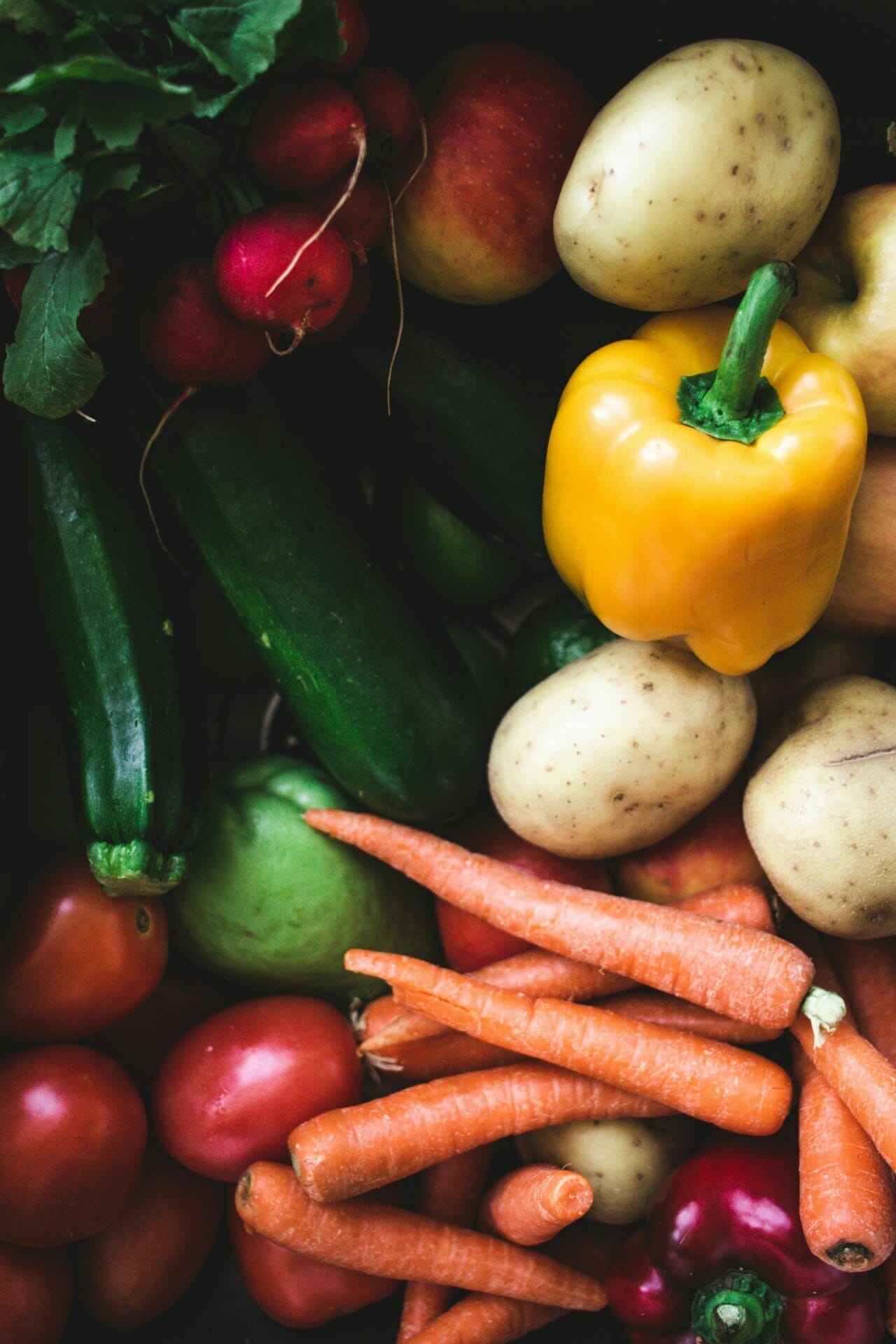



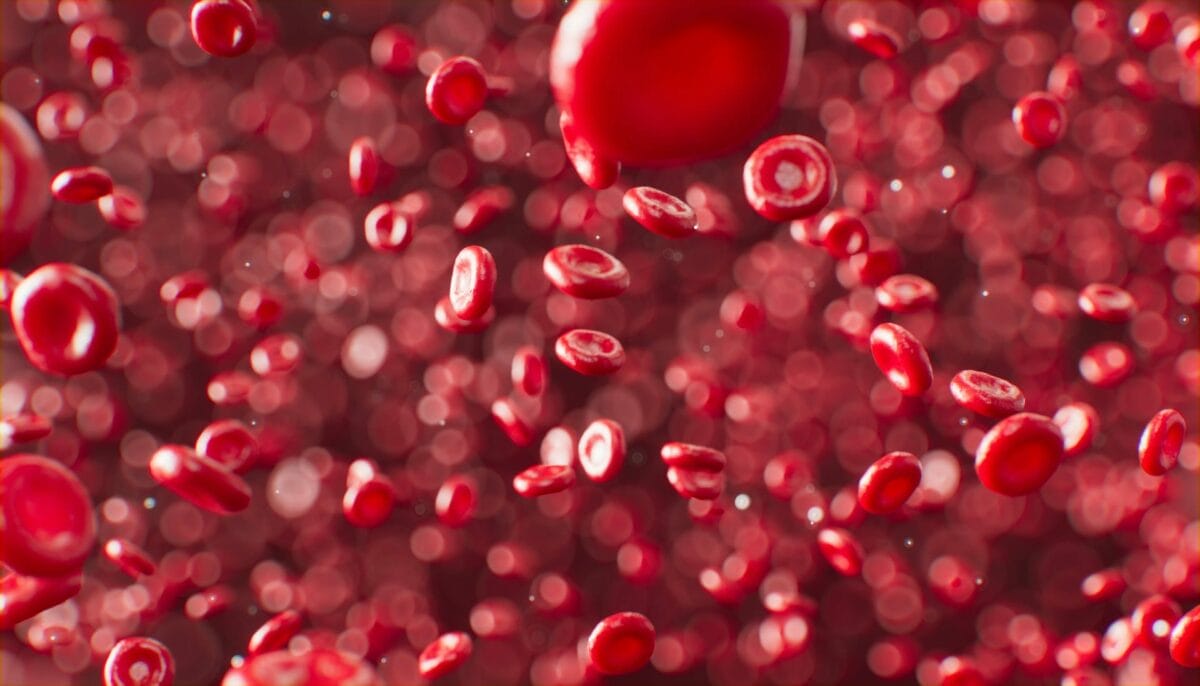
Sign up for updates that come right to your inbox.